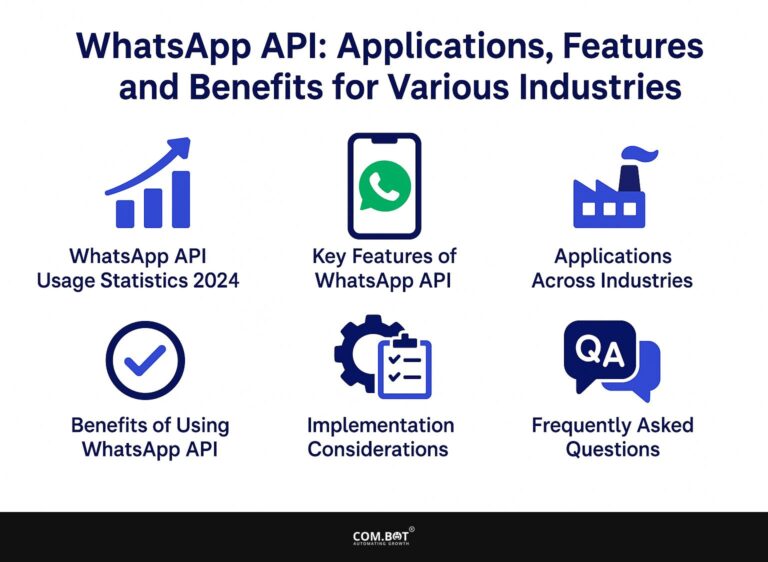The WhatsApp Phenomenon: Rise and Business Implications
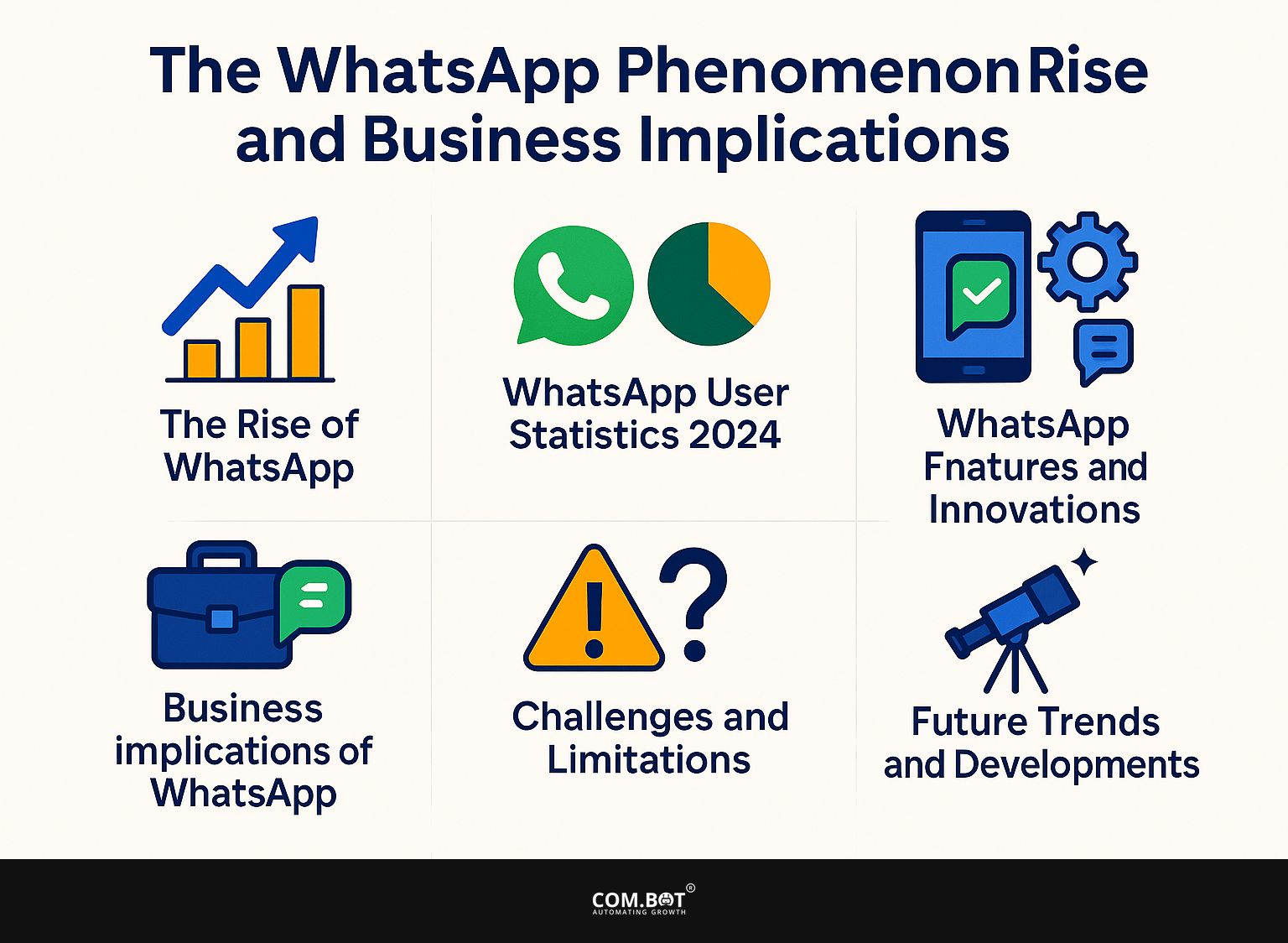
WhatsApp has changed how we communicate, surpassing competitors like iMessage and SMS in the U.S. With more than two billion users, Mark Zuckerberg’s platform has changed traditional messaging. As businesses see how useful it can be, knowing what this trend means is important.
This article examines WhatsApp’s growth, new features, and the business strategies that can take advantage of its wide audience to create meaningful interactions with customers.
Key Takeaways:
- WhatsApp has experienced rapid growth and has become a leading messaging platform, with a wide global reach and accessibility.
- Companies can use WhatsApp’s messaging and communication tools to reach customers and look into marketing and advertising choices.
- There are problems and limits to think about, such as privacy issues and competition with other messaging apps, but there is potential for e-commerce integration and improvements in AI and automated systems.
- 1 The Rise of WhatsApp
- 2 WhatsApp User Statistics 2024
- 3 WhatsApp User Statistics 2024
- 3.1 Global and Regional User Base: Monthly Active Users
- 3.2 Global and Regional User Base: User Statistics
- 3.3 Message and App Usage: Message Statistics
- 3.4 Message and App Usage: Time Spent on App
- 3.5 WhatsApp Business Statistics: Download Statistics
- 3.6 WhatsApp Business Statistics: Market Penetration and Sales
- 3.7 Global Reach and Accessibility
- 4 WhatsApp Features and Innovations
- 5 Business Implications of WhatsApp
- 6 Challenges and Limitations
- 7 Future Trends and Developments
- 8 Frequently Asked Questions
- 8.1 1. What is the WhatsApp Phenomenon and how did it rise to popularity?
- 8.2 2. How many users does WhatsApp currently have and how has this affected businesses?
- 8.3 3. Can businesses advertise on WhatsApp and what are the implications of this?
- 8.4 4. How has the WhatsApp Phenomenon impacted traditional forms of communication?
- 8.5 5. What are the potential risks for businesses using WhatsApp for communication?
- 8.6 6. How can companies keep up and take advantage of the WhatsApp trend for their benefit?
1. Overview of the Platform
WhatsApp lets users share pictures and videos, have group chats, and make voice or video calls, making it easier to stay in touch. Users can easily send photos, videos, and documents to make conversations more engaging.
WhatsApp lets you have up to 256 people in a group, perfect for family events or work projects. The voice and video calling feature allows for live conversations, with more than 2 billion calls made each day, showing its dependability. To keep your messages safe, use end-to-end encryption so only you and the recipient can read them.
As mentioned in our analysis of Two-Factor Authentication via WhatsApp: Setup and Best Practices, additional security measures can further enhance the privacy of your communications. This combination of features makes WhatsApp a go-to choice for seamless connectivity.
2. Founding and Growth Timeline
Founded in 2009 by Jan Koum and Brian Acton, WhatsApp’s rapid ascent culminated in its 2014 acquisition by Facebook for $19 billion, marking one of the largest tech deals in history. Over the years, WhatsApp has added important features, which have greatly helped its user numbers grow.
For instance, in 2016, it reached 1 billion users, a milestone highlighted by the launch of end-to-end encryption that year, reinforcing user trust. In 2018, video calling was added, enhancing personal connections, and by 2021, the introduction of WhatsApp Business showcased its potential for commerce.
Together, these milestones highlight WhatsApp’s growth from a simple messaging app to a complete communication platform.
The Rise of WhatsApp
WhatsApp’s number of users has increased rapidly, becoming the top choice for messaging in many countries around the world. To understand how businesses can leverage this platform effectively, you might want to learn more about the features, benefits, and strategies of WhatsApp Business.
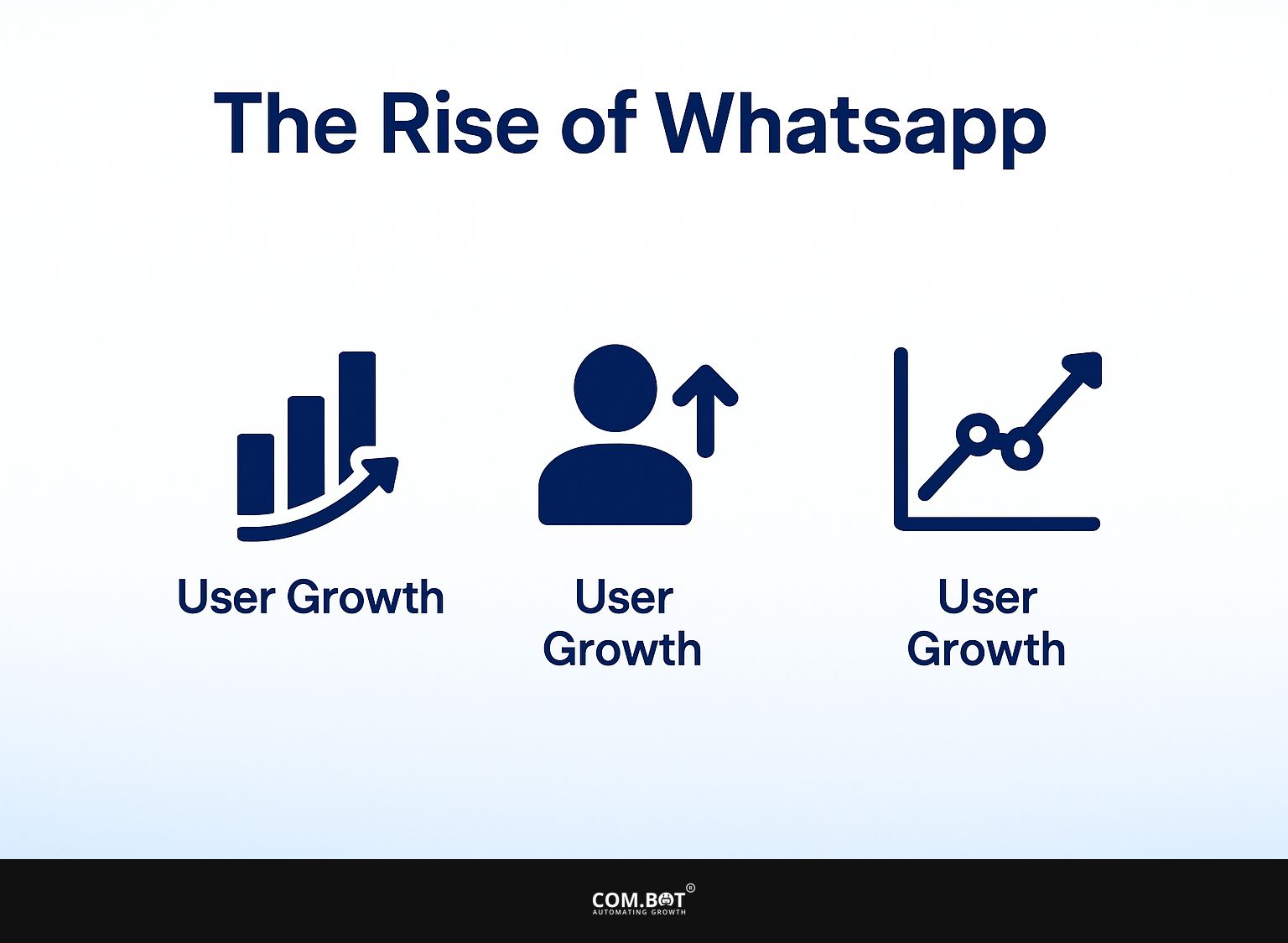
User Growth Statistics
As of January 2024, WhatsApp boasts over 2 billion active users, with an impressive increase of 500 million users since 2020, reflecting its dominance in the messaging space.
In comparison, Apple’s iMessage and traditional SMS lag behind, with iMessage claiming around 1 billion users as of 2023.
Trends show younger demographics favor WhatsApp for its multimedia features, while older users often rely on SMS due to its simplicity. The app is very popular in places such as Latin America and Southeast Asia, highlighting its attractiveness.
WhatsApp allows people to connect socially with features like Groups and Broadcasts, which helps keep users interested and coming back, important for its continued growth.
WhatsApp User Statistics 2024
WhatsApp User Statistics 2024
Global and Regional User Base: Monthly Active Users
Global and Regional User Base: User Statistics
Message and App Usage: Message Statistics
Message and App Usage: Time Spent on App
WhatsApp Business Statistics: Download Statistics
WhatsApp Business Statistics: Market Penetration and Sales
The WhatsApp User Statistics 2024 Information shows the wide and changing use of WhatsApp worldwide. With 2 billion monthly active users (MAU) worldwide WhatsApp is a key communication tool, especially widely used in places like India, which has a large number of users. 532.2 million users. The large number of users in India shows how important the app is for daily communication. This is due to many people having smartphones and cheap data plans.
In the United States, 100 million monthly active users represent a considerable portion of the population, with 29% of U.S. adults using the app. A notable demographic is the Gen Z and Millennials, who make up 60% of the MAU, indicating the app’s strong appeal among younger generations who favor instant messaging over traditional communication methods. Gender distribution reveals a slightly higher 52.2% male user presence globally, compared to 47.7% female users, suggesting a relatively balanced gender engagement.
The Message and App Usage data shows WhatsApp’s importance as a key communication tool, with 100 billion messages sent daily. This number reflects a significant 53.84% increase since 2018, showcasing the growing reliance on digital communication. The popularity of voice messaging, with 7 billion voice messages sent daily, highlights the app’s diverse functionality, catering to various user preferences. Furthermore, 57.82% of messages receive quick responses, indicating high engagement and the app’s effectiveness in facilitating real-time interactions.
Users spend an average of 33.1 minutes daily on WhatsApp, translating to approximately 16.5 hours monthly, which signifies the app’s integral role in users’ daily routines. The WhatsApp Business Statistics reveal 267 million downloads in 2024, with 152.1 million made for WhatsApp Business, showing its increasing value for businesses wanting direct customer connections.
Notably, 97% global market penetration highlights WhatsApp’s widespread use as a communication tool. Additionally, 66% of users make purchases after interacting with brands via WhatsApp, highlighting its effectiveness as a marketing and sales channel, allowing businesses to engage audiences directly and personally.
In conclusion, WhatsApp’s continued expansion and diversified functionalities make it an important tool for communication in both personal and business settings, with its extensive global and regional presence and continuous growth trends keeping it relevant in today’s digital world.
Global Reach and Accessibility
WhatsApp’s accessibility across platforms, including Android and iOS, and in over 180 countries, positions it as a universal communication tool.
The platform is available in regions such as India, Brazil, and Europe. It provides features designed specifically for these areas to make using it better for people.
For instance, in India, WhatsApp supports multiple regional languages, ensuring inclusivity. In Brazil, it integrates payment features to facilitate transactions directly within chats, beneficial for small businesses. Those curious about the setup and usage of WhatsApp Pay might appreciate our guide on WhatsApp Pay.
Concurrently, in Europe, the app follows strict privacy rules, giving users strong security choices. These changes meet different user needs and improve how it works on various mobile devices.
WhatsApp Features and Innovations
WhatsApp is always improving, adding new features that make it easier for users to communicate around the world. One such advancement is WhatsApp Pay, which simplifies transactions directly through the app, enhancing user convenience and expanding its functionality.
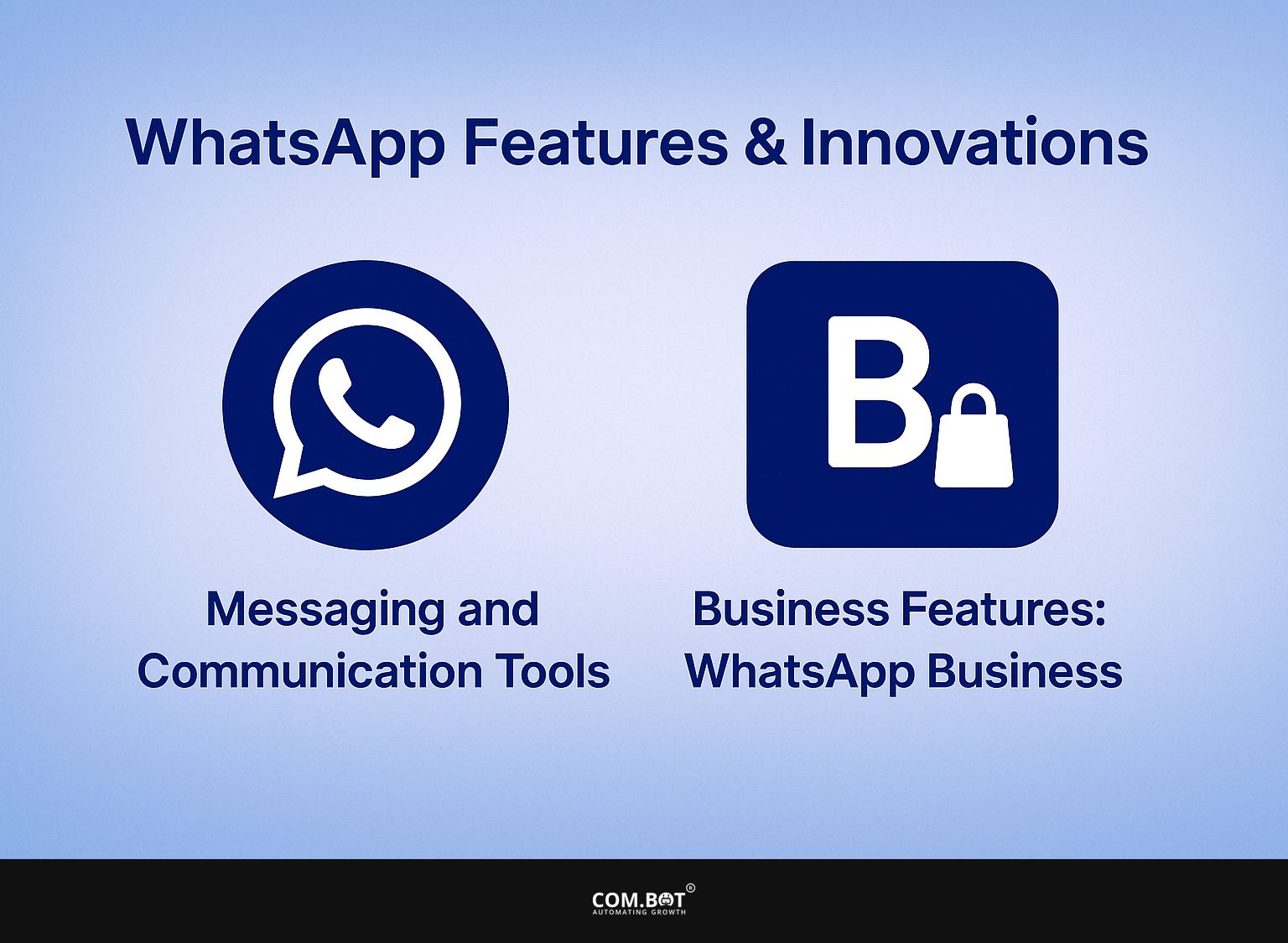
1. Messaging and Communication Tools
Key messaging features like complete encryption, emojis, and multimedia sharing make WhatsApp a flexible communication platform.
Plus these features, WhatsApp also offers voice messaging, allowing users to send and receive voice notes, which is particularly useful for quick updates.
Document sharing supports various file types, improving teamwork for work or school projects. Recent updates have introduced stickers, adding a fun, expressive element to messaging.
User comments often highlight the reliable and fast delivery of messages, making it a popular choice for both personal and work communication. Users appreciate that they can stay connected seamlessly across devices.
2. Business Features: WhatsApp Business
WhatsApp Business is a specific platform for businesses to interact with customers, providing tools such as instant replies, direct responses, and company profiles.
Plus these features, the WhatsApp API allows businesses to send messages at scale, ensuring timely responses to customer inquiries.
A retail store can set up a system to automatically send order confirmations and shipping updates, which makes customers happier. A travel agency might use instant replies for common questions, reducing response time a lot.
By using these tools, companies like KLM Royal Dutch Airlines and Pizza Hut have improved interaction, leading to more loyal customers and clearer communication.
Business Implications of WhatsApp
With many users, WhatsApp offers special chances for companies to connect with customers and apply specific marketing plans. For those interested in exploring how businesses can leverage various strategies, our expert analysis of WhatsApp Business features and benefits provides valuable insights into effective application.
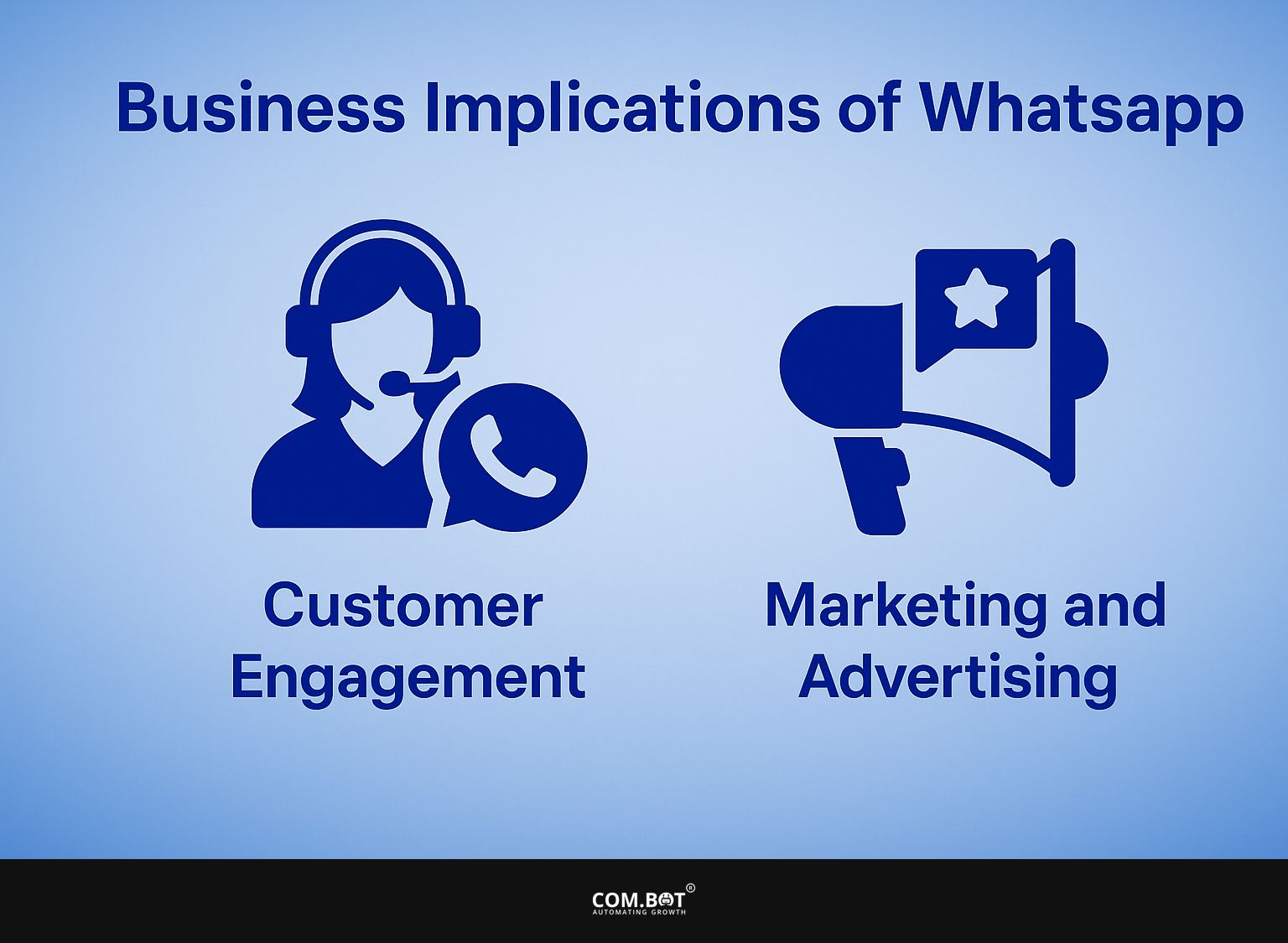
1. Customer Engagement Strategies
Businesses can achieve up to a 98% open rate by utilizing WhatsApp for customer communication, significantly higher than traditional email marketing.
- To get more responses on WhatsApp, use customer names and mention their previous purchases in your messages.
- Use multimedia content, such as images or short videos, to make communications more engaging.
- To promote your products, set up group chats to build a community. Offer discounts that match the group’s interests to get them involved.
A local restaurant improved its customer engagement by using WhatsApp to share menu updates and special deals. This approach led to a 50% rise in returning customers within a month.
Implement these strategies for better customer retention and interaction.
2. Marketing and Advertising Opportunities
WhatsApp’s innovative advertising opportunities, like click-to-WhatsApp ads, allow brands to directly connect with consumers, enhancing conversion rates.
Connecting WhatsApp with Facebook and Instagram ads increases interaction. A clothing brand ran a campaign using direct messages for customer service, leading to a 35% rise in inquiries.
By linking their ads to WhatsApp, they simplified the buying process, allowing users to ask questions instantly. Facebook Ads Manager lets you make ads that connect to WhatsApp, making the communication more personal for each user.
Promotions shared through WhatsApp messages build a sense of belonging and commitment, resulting in better conversion rates compared to regular advertisements.
Challenges and Limitations
Even though WhatsApp is successful, it has problems that might affect its growth and how much users trust it, especially with privacy issues and competition.

1. Privacy and Security Concerns
While WhatsApp’s end-to-end encryption is a strong feature, concerns over data privacy and security breaches continue to challenge user trust.
Recent surveys show that 60% of users worry about their data being shared with Meta, influencing their overall experience. These concerns are heightened by reports of unauthorized data access and the opaque nature of data collection practices.
To solve these issues, users can improve their privacy by:
- Regularly updating the app
- Reviewing privacy settings
- Using two-factor authentication
Utilizing features like disappearing messages can further protect sensitive information, allowing users to maintain a sense of security and control over their conversations.
2. Competition with Other Messaging Apps
WhatsApp competes with other messaging platforms like iMessage and Telegram, which offer unique features that appeal to specific user segments.
WhatsApp is great for personal chats because it uses strong security features and has many users. In contrast, iMessage thrives within the Apple ecosystem, providing seamless integration across devices and features like Animoji.
Telegram stands out for its focus on privacy and group features-supporting up to 200,000 members in a single group chat and offering channels for broadcasting to large audiences.
Many people choose Telegram to create communities, while those using Apple devices tend to pick iMessage for a unified experience.
Future Trends and Developments
WhatsApp is likely to expand with potential upgrades in online shopping links and AI tools to improve its messaging service.

1. Potential for E-commerce Integration
WhatsApp’s tools for linking with online shops can change the way businesses talk to customers, allowing them to make purchases right through the app. Small businesses can create a product list in WhatsApp, allowing customers to easily look through what they sell.
A great example is the clothing store `Fashionista’, which showcases its latest collections via WhatsApp, encouraging customers to inquire about sizes and availability.
Integrating in-app payments allows businesses to complete transactions without redirecting customers to external sites-a method successfully adopted by local grocery stores, which report increased sales and customer satisfaction. These features make shopping simple and hold the interest of customers.
2. Impact of AI and Automation
Using AI and automation in WhatsApp’s features, like chatbots for customer service, greatly improves user experience and makes operations more efficient. Companies have used AI-powered chatbots on WhatsApp to make customer communication more efficient.
For example, a retail company implemented a bot to provide 24/7 chat support, reducing response times from hours to seconds and increasing customer satisfaction by 30%.
Tools like Twilio and WhatsApp Business API allow you to create automatic responses and collect information for analysis. Examining customer behavior can help companies make their services and product strategies better.
Frequently Asked Questions
1. What is the WhatsApp Phenomenon and how did it rise to popularity?
The WhatsApp Phenomenon describes how quickly the messaging app, WhatsApp, became popular and widely used. It was founded in 2009 and gained popularity due to its simple interface, cost-effective messaging, and cross-platform compatibility.
2. How many users does WhatsApp currently have and how has this affected businesses?
As of 2020, WhatsApp has over 2 billion active users worldwide. This large user base has created a new platform for businesses to reach and interact with their customers, making it a useful tool for businesses.
3. Can businesses advertise on WhatsApp and what are the implications of this?
WhatsApp lets companies use its Business API to send specific messages to users. This can increase brand awareness and drive sales, but businesses must adhere to privacy and anti-spam regulations.
4. How has the WhatsApp Phenomenon impacted traditional forms of communication?
The rise of WhatsApp has led to a decline in traditional forms of communication such as SMS and phone calls. This is because the app is affordable and can send multimedia messages, making it a popular way to communicate for many people and businesses.
5. What are the potential risks for businesses using WhatsApp for communication?
One potential risk is the lack of control over the messaging platform, as it is owned by Facebook. This could lead to privacy concerns and potential data breaches. Businesses must follow WhatsApp’s terms and conditions to avoid legal issues.
6. How can companies keep up and take advantage of the WhatsApp trend for their benefit?
To remain competitive, businesses can use WhatsApp’s tools such as setting up business profiles, offering customer support through WhatsApp, and launching focused advertising campaigns. Businesses need to keep up with the latest features and trends to make the most of WhatsApp.


